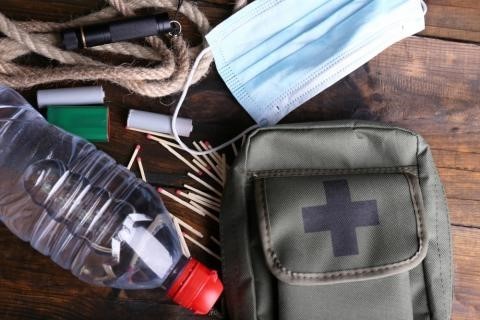“Bracing for a blaze: How Canadians can prepare for a severe wildfire season”
As intense wildfires ravage western Canada, communities are being forced to evacuate as the threat of these unstoppable infernos looms large. With experts predicting a particularly severe wildfire season this summer, it is crucial for Canadians to be prepared in case they are ordered to leave their homes. From Alberta to British Columbia to Manitoba, the flames are spreading rapidly, leaving thousands of residents in fear and uncertainty.
The Urgency for Preparation: A Call to Action by Officials
Prime Minister Justin Trudeau, recognizing the urgency of the situation, called for better preparedness and coordination to tackle the growing threat of wildfires as a result of rising global temperatures. As the risk of fires increases, Canadians must heed the warnings and take necessary steps to protect themselves and their communities.
Pre-evacuation Preparedness: What Canadians Need to Know
Before an evacuation order or alert is issued, it is essential for residents to understand the difference between the two terms. Emergency management expert Jack Rozdilsky emphasizes the importance of having a plan in place, knowing where to go, what to bring, and who to contact in case of an emergency. Creating a checklist, dressing appropriately, and having an emergency kit ready are all crucial steps in preparing for a potential evacuation.
Evacuation Orders: What to Do When You’re Ordered to Leave
When faced with an evacuation order, it is imperative to remain calm and follow official evacuation routes. Knowing where to go and making arrangements ahead of time can help alleviate some of the stress and anxiety that comes with being forced to leave your home. Public evacuation centers and shelters are available for those in need, and it is essential to heed the advice of emergency officials to ensure your safety and well-being.
Post-evacuation Recovery: Moving Forward After the Flames
Once the evacuation order or alert is lifted, it is vital to exercise caution when returning home. Checking for hazards, ensuring food and water safety, and documenting any damage for insurance purposes are all important steps in the recovery process. The stress and social impacts of natural disasters should not be overlooked, and seeking support and assistance from local authorities and organizations is crucial for rebuilding and moving forward.
Conclusion: A Future of Preparedness and Resilience
As the threat of wildfires continues to grow, Canadians must prioritize preparedness, resilience, and community support in the face of these natural disasters. By heeding the advice of experts, emergency officials, and organizations, we can work together to mitigate the impact of wildfires and protect our homes, our communities, and our future.”
Reference















